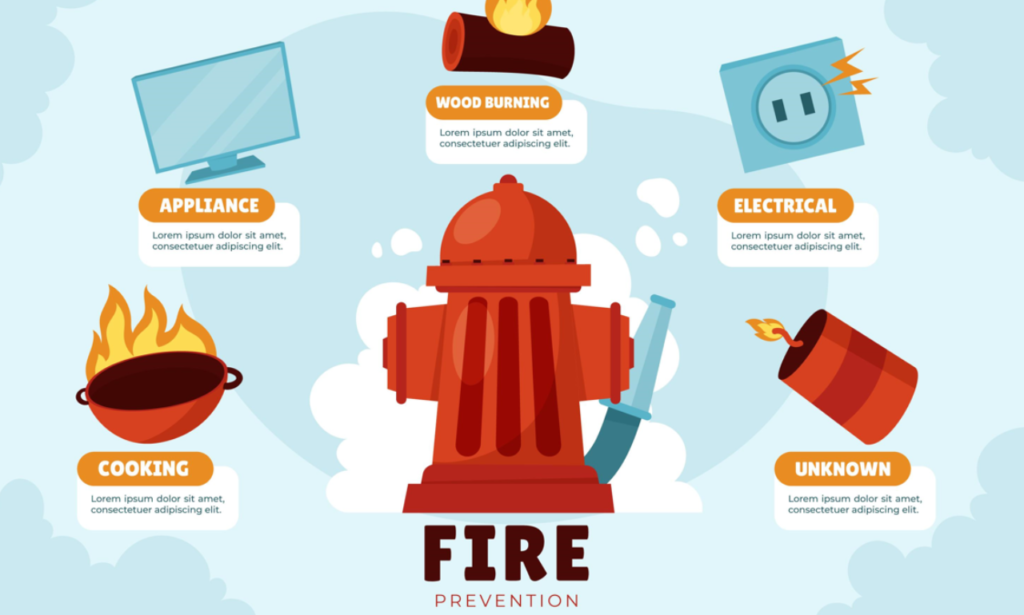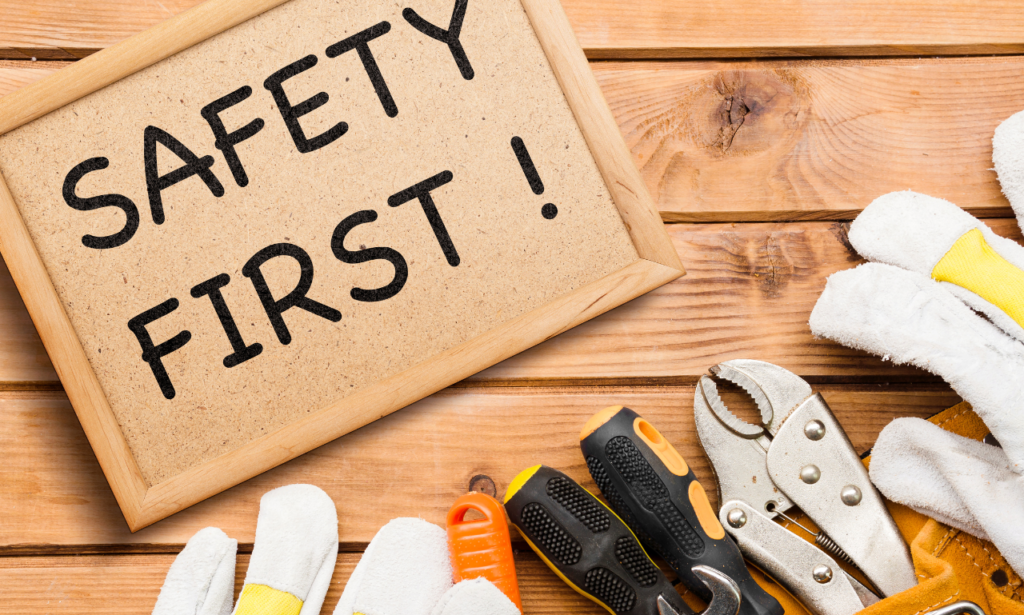Fire safety is an essential topic that every family must address, especially when it comes to children. Kids are naturally curious, and while this curiosity is a beautiful trait, it can also lead to dangerous situations if they’re not taught about fire safety early on. Understanding the basics of fire safety is not just about preventing accidents—it’s about empowering our children with the knowledge they need to protect themselves in case of an emergency.
In this article, we’ll explore fire safety tips for kids that every parent, teacher, and caregiver should know. These tips are designed to be easy to understand and follow, ensuring that your little ones are well-prepared to handle any situation involving fire. Let’s dive into these life-saving tips.
- 1. Teach Kids the Importance of Fire Safety
- 2. Create a Family Fire Escape Plan
- 3. Teach Kids How to Safely Exit a Room on Fire
- 4. Keep Matches and Lighters Out of Reach
- 5. Install and Maintain Smoke Alarms
- 6. Keep Flammable Objects Away from Heat Sources
- 7. Educate Kids About Kitchen Safety
- 8. Teach Kids How to Use 911 in an Emergency
- 9. Teach Kids What to Do If They’re Trapped
- 10. Make Fire Safety Fun with Games and Activities
- Final Thoughts on Fire Safety for Kids
1. Teach Kids the Importance of Fire Safety
Why Fire Safety Education Is Crucial
The first step in protecting your children from fire is educating them about the dangers of fire and the importance of safety. Kids need to understand that fire is not something to play with and that it can be very dangerous.
- Start by explaining what fire is and how it can be useful (like cooking food) but also dangerous if not handled properly.
- Use age-appropriate language to discuss the potential risks of fire accidents at home and outside.
Incorporate Fire Safety into Daily Conversations
Make fire safety a regular part of your discussions at home.
- Talk about fire safety rules when using the stove, candles, or even when having a campfire.
- Reinforce the idea that fire is not a toy and should only be handled by adults or under strict supervision.
2. Create a Family Fire Escape Plan
Developing an Effective Escape Plan
Every family should have a fire escape plan that everyone, including kids, understands and can follow. A well-prepared plan can save lives in the event of a fire.
- Draw a map of your home, showing all the exits and escape routes.
- Identify two ways out of every room, such as a door and a window.
Practice Makes Perfect
It’s not enough to just have a plan—you need to practice it regularly.
- Conduct fire drills at least twice a year, and make them fun and engaging for the kids.
- Practice different scenarios, like escaping during the day and at night, to ensure that everyone knows what to do.
Designate a Safe Meeting Spot
Choose a safe meeting spot outside the home where everyone will gather after escaping.
- Ensure that the meeting spot is a safe distance from the house, like a neighbor’s yard or a specific tree.
- Remind kids that once they’re outside, they should never go back inside for any reason.
3. Teach Kids How to Safely Exit a Room on Fire
The Stop, Drop, and Roll Technique
One of the most important fire safety techniques that kids should learn is the stop, drop, and roll method. This technique can prevent serious burns if their clothes catch fire.
- Teach kids to stop immediately, drop to the ground, and roll back and forth to extinguish the flames.
- Make sure they understand that running can make the fire worse, so stopping is crucial.
Crawling Low to Avoid Smoke
Smoke inhalation is a major cause of injury during fires. Kids need to know how to avoid smoke while escaping.
- Instruct kids to crawl low under the smoke, where the air is clearer and easier to breathe.
- Practice this technique during your fire drills, so they become familiar with it.
4. Keep Matches and Lighters Out of Reach
The Danger of Accessible Fire Starters
Matches, lighters, and other fire-starting tools should always be kept out of reach of children. Curious kids might be tempted to play with these items, not understanding the potential danger.
- Store matches and lighters in a locked drawer or a high shelf that’s out of reach.
- Teach kids that these items are tools, not toys, and that they should only be used by adults.
Lead by Example
Children learn by watching adults. If they see you being responsible with fire, they’re more likely to follow your example.
- Always handle matches, lighters, and other fire-starting tools responsibly, and let your kids see you doing so.
5. Install and Maintain Smoke Alarms
The Role of Smoke Alarms in Fire Safety
Smoke alarms are your first line of defense in detecting a fire early. They can give you the precious seconds needed to escape safely.
- Install smoke alarms in every bedroom, outside each sleeping area, and on every level of your home, including the basement.
- Use test button to check alarms monthly and replace batteries at least once a year.
Teach Kids What to Do When They Hear the Alarm
It’s crucial that kids know what to do if they hear a smoke alarm.
- Explain that the alarm means they need to get out of the house immediately.
- Include this in your fire drills, so they’re familiar with the sound and what to do.
6. Keep Flammable Objects Away from Heat Sources
Understanding Flammable Materials
Flammable materials are items that can easily catch fire, such as paper, cloth, and certain liquids. These should be kept far away from heat sources like stoves, heaters, and candles.
- Teach kids to keep flammable objects at least three feet away from anything that gets hot.
- Explain that items like curtains, towels, and paper should never be left near a stove or space heater.
Safe Use of Space Heaters and Fireplaces
If you use space heaters or fireplaces, make sure they’re used safely.
- Keep space heaters at least three feet away from anything flammable.
- Always use a fireplace screen to prevent sparks from flying into the room.
7. Educate Kids About Kitchen Safety
The Kitchen Is Not a Play Area
The kitchen is one of the most common places for fires to start, so it’s important to teach kids that it’s not a place to play.
- Set clear kitchen safety rules, like no running or playing near the stove.
- Explain that cooking appliances can get very hot and cause burns or start a fire.
Supervised Cooking
If your child is old enough to help with cooking, make sure they do so under supervision.
- Teach them how to safely use the stove and microwave.
- Remind them never to leave cooking food unattended, even for a short time.
8. Teach Kids How to Use 911 in an Emergency
Knowing When to Call for Help
Kids should know how to call 911 in an emergency, including a fire. Make sure they understand what constitutes an emergency and when it’s appropriate to make the call.
- Explain that calling 911 is for emergencies only, like if they see a fire or someone is hurt.
- Practice making a call with a pretend phone, so they know what to expect.
Providing Information
Teach kids what information they need to provide when calling 911.
- They should be able to state their name, address, and the nature of the emergency.
- Encourage them to stay calm and answer the dispatcher’s questions clearly.
9. Teach Kids What to Do If They’re Trapped
Staying Safe in a Trapped Situation
In some cases, kids might not be able to escape a fire and could become trapped in a room. It’s important that they know what to do in this situation.
- Teach them to stay low to avoid smoke and to try to signal for help by waving a cloth out the window.
- If the door is hot, they should not open it—instead, they should find another way out if possible.
Using a Fire Extinguisher
Older kids should know how to use a fire extinguisher in case they’re trapped and need to put out a small fire to escape.
- Teach them the PASS method: Pull the pin, Aim low, Squeeze the handle, and Sweep from side to side.
- Remind them that extinguishers are only for small fires—if they can’t put it out quickly, they need to leave immediately.
10. Make Fire Safety Fun with Games and Activities
Engaging Kids with Fun Learning
Kids learn best when they’re having fun, so make fire safety education engaging with games and activities.
- Create a fire safety scavenger hunt, where kids look for potential fire hazards in the home.
- Use coloring books and online games designed to teach fire safety.
Reward Safe Behavior
Positive reinforcement is a great way to encourage kids to take fire safety seriously.
- Reward them for participating in fire drills or for following safety rules.
- Celebrate Fire Prevention Week by doing special activities that focus on fire safety.
Final Thoughts on Fire Safety for Kids
Teaching kids about fire safety is one of the most important things you can do as a parent or caregiver. By following these fire safety tips, you can help ensure that your children know what to do in case of a fire and how to stay safe.
Remember, fire safety is not a one-time lesson—it’s an ongoing conversation that should be reinforced regularly. Keep practicing your fire escape plan, continue educating your kids about the dangers of fire, and always lead by example.
For more resources on fire safety, check out our recommended products that can help keep your home and family safe. Don’t wait until it’s too late—start teaching
your kids about fire safety today and give them the knowledge they need to protect themselves.
- Life Style Cool Shit Project: Redefine Your Space at LifeStyledCo - January 6, 2025
- Picuki: Your Gateway to Accessing Instagram’s Exclusive Content - December 31, 2024
- 5 Attractive Places to Visit in Abha, Saudi Arabia - December 18, 2024



